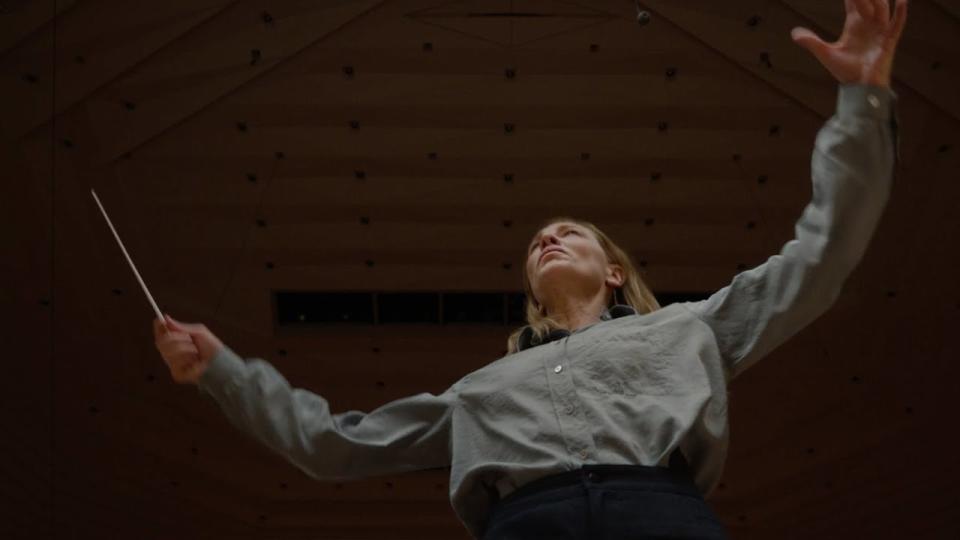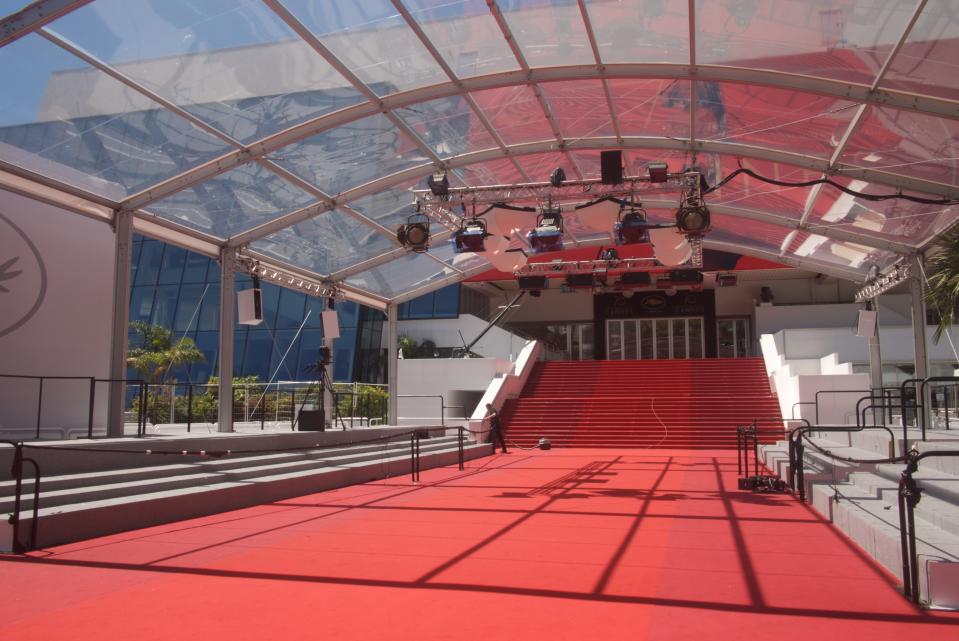Stop Counting the Minutes of Film Festival Ovations

Heeere comes Brendan Fraser’s teary-eyed response to the six-minute ovation following “The Whale,” nipping at the heels of the six-minute-plus “TÁR” ovation that greeted Cate Blanchett… But wait… Timothée Chalamet’s cannibal romance “Bones and All” eats its way into the lead with a stunning 10-minute explosion, and… “Banshees of Inisherin” gets 12 minutes! It’s a photo finish! Meanwhile, looks like “Don’t Worry Darling” is in a tailspin, flagging behind with a perfunctory four minutes… But wait! It’s a frantic last-minute finish for the ages as the cast milk the moment for awkward viral potential, and…was that spit? Let’s take a look at the replay!
Any fragment of culture can be reduced to a bite-sized clip, and now it’s the standing ovation. The formal act of appreciation that dates back to Ancient Rome now dominates the news cycle at major festivals with a temporal rigor of Kentucky Derby proportions.
More from IndieWire
'Blonde' Review: Andrew Dominik's Miserable Marilyn Monroe Portrait Only Further Tarnishes the Star
'The Damned Don't Cry' Review: A Loose Remake of Pier Paolo Pasolini Finds New Blood
Enough. Stop timing film festival ovations as if they’re a meaningful metric. They are not box-office dollars, or minutes streamed. Sometimes it’s an act of hospitality, sometimes it reflects the achievement that just unfolded on the big screen, and sometimes it’s desperation. Ovations can mean everything or nothing at all.
I attended the Telluride Film Festival a few days before several Venice-ovation films made their way to the Rockies, including “TÁR,” a movie that was widely embraced even though the screenings didn’t end with Colorado audiences leaping to their feet and staying there. Is this ritualistic act unique to the formal atmosphere of highbrow European festivals?
Ovations often follow screenings in large venues hosting formal, upscale premieres, with audiences that represent a mixture of industry and press. When the lights come up, the initial ovation may only signal that the audiences were content to stick around; from there, it may evolve depending on how the subjects of the clamor milk the moment.

In the midst of the standing ovation for “Elvis” at this year’s Cannes Film Festival, the camera beamed a livestream of the movie’s cast onto the screen. Tom Hanks looked out at the crowd with a wry grin and gradually stuck his thumb in the direction of the movie’s star, Austin Butler; the applause increased on cue. Hanks played the room like a pro, and it was quite a room: A few seats away, newly anointed Warner Bros. Discovery executive David Zazlav watched the spectacle in awe, and boasted about the movie to shareholders a few weeks later.
Austin Butler’s big #Cannes movie moment after ELVIS pic.twitter.com/jocQRYgdt9
— erickohn (@erickohn) May 25, 2022
Standing ovations can be wondrous experiences in the moment, an immediate and visceral response to the otherwise inexpressible euphoria of an aesthetic encounter. They can also be total bullshit. For the festivals, it’s just the nature of the show.
“I consider it as part of my job,” Cannes director Thierry Fremaux emailed me when I asked him about the recent spate of ovation reports out of Venice. “I pay attention to the screening, how long to keep the room in the dark, whether to cut the credits or not, the best moment to turn on the light, et cetera. Every screening is a celebration, and the participation of the audience makes that celebration much better. People want to participate!”
If that level of participation seems to have accelerated lately, Fremaux said, it might have something to do with the last few years. “Since COVID, being in a movie theater with a great film in the presence of artists is a beautiful privilege,” he said. “That explains the recent generosity.”
There’s a more practical reason for the surge of ovation reports: They reflect ways that media and European film festivals are each evolving to meet the demands of a 21st-century news cycle. For years, Cannes, Venice, and Berlin kicked off each day with massive press screenings ahead of the evening gala premieres. This let journalists get the big movie of the day out of the way so they had time to file. In ye olden days of print journalism, reviews came out many hours later and gradually seeped their way into broader awareness.

Andy Lauwers/REX/Shutterstock
As is its wont, the internet changed everything. Immediately after the morning screenings, trade critics would scramble to dash out reviews to be published online moments later. The beast of social media further simplified that process: Movies could be demolished by snarky tweets before the credits rolled and rapidly assembled tweet roundups could provide more media weight than the substantial criticism that followed. Hours became an eternity; by the time the red carpets started, the film was old news.
“The Search,” director Michel Hazanavicius’ 2014 follow-up to “The Artist,” was demolished well ahead of its premiere; Hazanavicus later compared his red-carpet experience to facing a firing squad. “I feel like I was born in Cannes for ‘The Artist,’” he told me earlier this year, “but I died in Cannes for ‘The Search.’”
Running this gauntlet made the industry wary of glamorous festival premieres, and festivals responded with a pragmatic solution. Berlin and Cannes instituted embargoes: No reviews or social media reactions can run until after the gala premieres. For Venice, the embargo remains in place until after the film starts. The result is a news cycle that’s more centralized around the intense collective response rather than any individual reaction.
Festival hype requires immersion to be fully understood. Way back in 1955, French critic André Bazin described film festivals as a religious experience, with the cinema as a temple that united audiences in ritualistic fervor. “Fully fledged participation in the Festival is like being provisionally admitted to covenant life,” he wrote. Nearly 70 years later, that still holds true. Like religion, festivals are designed as rigid systems based on beliefs that may or may not be connected to authentic truths. At a time of extreme fragility for the business and art of cinema, reports of ecstatic responses are be welcome votes of confidence that the moviegoing experience remains invaluable.
However, ovations are as ephemeral as the sound waves they create. They shouldn’t be read as anything other than… standing ovations at a film festival. For ovations to provide any intelligence around the future for a given title, we’d need a litmus test that can determine duration against overall appreciation for the director, the stars, the audience’s desire to be seen appreciating a significant movie — and finally, whether or not it’s any good.
For now, these minute-by-minute dispatches are so unreliable that they work against the festivals’s underlying goal: They enhance the impression of an insular event that has no real bearing on the future prospects of a movie. Ovation timing is an out-of-control hype tactic, but audiences do what they do and I wouldn’t blame anyone for jumping to your feet, even if the movie doesn’t really deserve it. With so much about moving images reduced to the small screen, and the experience of consuming them more private than ever, the very act of being there can feel like a minor miracle.
Best of IndieWire
From 'Barbie' to 'Babylon,' Here's Everything Margot Robbie Has in the Works
New Movies: Release Calendar for September 2, Plus Where to Watch the Latest Films
'White Noise': All the Details on Noah Baumbach's Film Starring Adam Driver and Greta Gerwig
Sign up for Indiewire's Newsletter. For the latest news, follow us on Facebook, Twitter, and Instagram.


